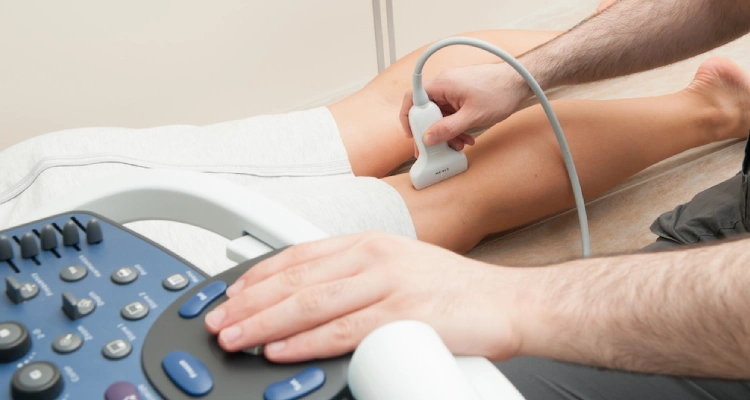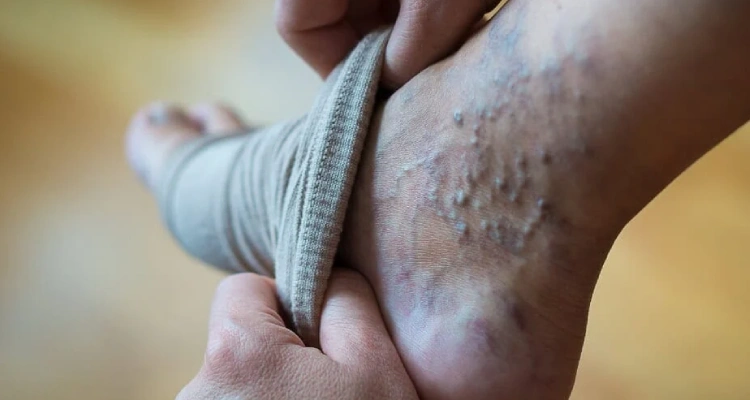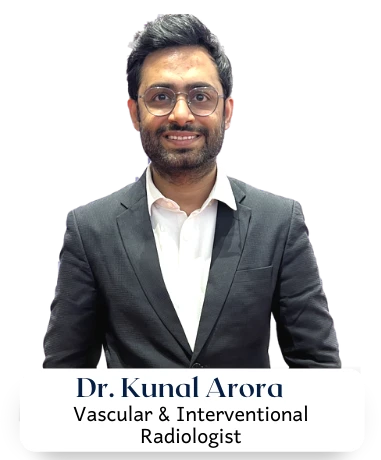Not all warning signs are obvious. Some appear quietly, just beneath the skin. Varicose veins are one of those conditions that develop slowly, and the symptoms may not be noticeable right away. By the time the condition becomes more obvious, it could already be affecting your comfort. Recognizing the varicose vein initial stage symptoms is key to managing it before it worsens. So, in this Varicose veins guide, we are going to explore the early signs to watch out for. Keep reading to learn how to stay ahead and take charge of your vein health.
Understanding Varicose Veins
Enlarged, twisted veins near the surface of the skin are referred to as varicose veins, and they are mostly found in the legs and feet. These visible veins are often surface symptoms of a deeper issue known as chronic venous insufficiency, a condition where veins struggle to circulate blood effectively. While they might seem like a cosmetic problem at first glance, they can cause pain and even some serious health issues if left untreated. Therefore, understanding varicose vein complications and preventions is important for avoiding long-term risks.
Early Stage Symptoms of Varicose Veins
- Visible Blue or Purple Veins
You might notice dark, bulging veins beneath your skin’s surface, especially in your legs. They may be blue or purple and become more visible after standing for a long time. If you notice these signs, it might be one of the very first Early stage varicose vein symptoms, and this condition will need immediate medical attention.
- Heaviness or Aching In The Leg
Do you feel heavy or achy at the end of a long day spent standing or sitting? This may be an early mark of varicose veins. It occurs when your blood isn’t flowing as well, and it feels weird and heavy. If that sounds similar, pay attention to your legs.
- Swelling in the Legs or Feet
If you see that your legs or ankles are swollen at the end of the day, it means you have varicose veins. Blood is now starting to pool in the veins and not return to the heart. It’s a frequent early symptom, especially after standing or sitting still.
- Itching or Burning Sensation
Have you ever felt like your veins are burning or itching? Which is not always pleasant. This occurs because poor circulation can cause inflammation, and the veins struggle to properly transport blood. If this happens to you, take time to note it.
- Leg Cramps
Getting up in the middle of the night with painful leg cramps is not just a random occurrence. It may indicate the presence of varicose veins. The cramps happen when circulation is poor and blood struggles to flow properly. It is worth considering a checkup for varicose veins relief if this happens to you.
- Fatigue or Restlessness in the Legs
Do you feel restlessness in your legs, especially in the evening? It’s the need to move, to stretch, because they can’t relax. This feeling, which is referred to as restless legs, occurs when circulation is reduced and is an early sign of varicose veins.
Next, let us look at varicose veins diagnosis and treatment that doctors may recommend.
Common Tests for Diagnosing Varicose Veins

- Physical Examination
A doctor will start by visually inspecting your legs while you are either standing or sitting. They will look for signs like swelling, discoloration, and visible bulging veins. You might also be asked to perform some leg movements to assess blood flow. A physical examination alone is not enough to assess the extent of varicose veins, and further tests will be necessary to evaluate vein function and blood circulation.
- Doppler Ultrasound
A Doppler Ultrasound evaluates the way blood flows as well as its speed and direction. It helps to diagnose issues such as venous reflux, blockages in veins, poor circulation, and other related conditions, such as varicose veins spider veins.
How It Works
- You may lie down or stand, depending on which veins are being tested.
- The gel is applied to the skin during the test to allow sound waves to pass through the skin.
- The transducer is moved across your skin to transmit sound waves that bounce back to create an image of blood flow.
It is used to identify malfunctioning valves and blood clots. It is particularly useful when planning targeted treatments, like sclerotherapy or laser therapy.
- Venogram
A venogram is a diagnostic imaging method that uses an injected contrast dye to create detailed X-ray images of the veins. It is extremely useful for determining the anatomical relationships of veins, particularly where the femoral and great saphenous veins meet
How It Works
- A contrast agent is introduced into your circulatory system.
- X-ray technology is then employed to obtain clear images of your blood vessels.
This method helps to confirm whether you have varicose veins.
These diagnostic tools also support accurate varicose veins grading, guiding the physician to understand how advanced the condition is and choose the most suitable varicose vein treatment in Mumbai.
Treatment options for Varicose Veins
If you are wondering how to deal with varicose veins, fortunately, there are various methods to remove varicose veins, even though certain procedures are no longer performed today. Vein stripping was the traditional standard approach. It involves a hospital admission and is performed under general anesthesia. Although successful, it was painful and often led to the recurrence of varicose veins. As time passed, innovation in the medical field led to the emergence of non-invasive techniques, which are listed below.
- Sclerotherapy
A frequently preferred method includes using a targeted liquid to collapse the problematic vein through direct insertion. This causes a reaction along the vein wall, making the vein collapse and harden. As time passes, the treated vein is broken down by the body and gradually disappears from sight.
- Endovenous ablation
Endovenous ablation is another highly effective option, according to the varicose veins laser treatment guide. This method uses heat, either from laser or radiofrequency energy, to seal off the faulty vein. Circulation shifts to stronger veins, while the sealed one gradually breaks down and disappears within the body.
- Microphlebectomy
It is best for large, bulging veins. This method involves creating small openings in the skin via which the affected vein is extracted. The method is performed under local anesthesia. It does not require any stitches.
- Glue Treatment
Glue treatment is a minimally invasive option. The damaged veins are sealed with medical glue called cyanoacrylate. This helps blood avoid the problem vein and flow through healthier veins. As time passes, the sealed vein dissolves in the body.
Several other treatments are also available apart from these. Your doctor will recommend it based on your individual case.
Summing Up
Early identification and awareness of varicose veins are important in management and in preventing their progression. If you see any of the above signs, then you need to find a professional to take care of your leg.
At the Endovascular Care Center, we have the latest and most advanced minimally invasive options for treating varicose veins. With Dr. Kunal Arora, the best interventional radiologist in Mumbai, you will get effective solutions tailored to your needs. Schedule your first appointment today and take the first step to healthier legs and greater comfort!
FAQs
- What causes varicose veins?
When the valves in the veins do not work, blood can accumulate, which causes stretched and twisted veins that are often seen beneath the skin.
- Do varicose veins get worse over time?
They may even worsen over time if the condition is not treated or if adjustments to your habits or lifestyle are not made.
- What is an effective early treatment for varicose veins?
Minimally invasive and interventional treatments are an effective early treatment. They are endovenous laser treatment and non-thermal ablation.
- Is walking helpful for varicose veins?
Yes, walking boosts blood circulation and reduces leg pressure. It also helps manage symptoms like swelling and heaviness.
- Is it safe to ignore varicose veins?
No, untreated varicose veins may cause complications like skin ulcers and poor wound healing due to reduced blood flow.


